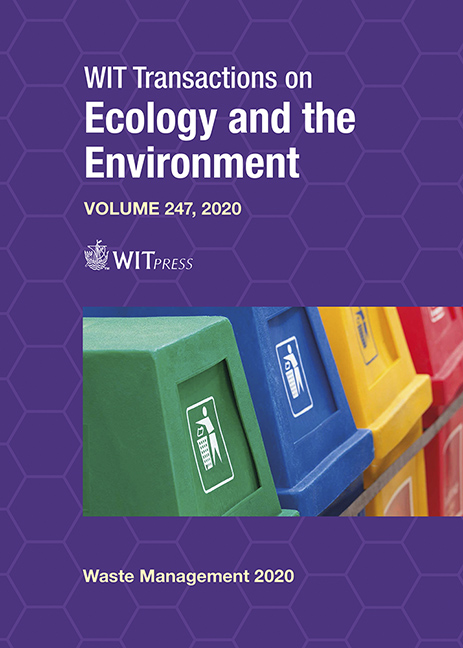DISPOSAL OR TREATMENT: FUTURE CONSIDERATIONS FOR SOLID WASTE FROM THE CONSTRUCTION AND DEMOLITION INDUSTRY
Price
Free (open access)
Transaction
Volume
247
Pages
13
Page Range
171 - 183
Published
2020
Paper DOI
10.2495/WM200161
Copyright
WIT Press
Author(s)
SHANNON L. WALLIS, CHARLES LEMCKERT, ROBYN HARDY, TERRI-ANN BERRY
Abstract
Each year more than 2 billion tonnes of municipal solid waste are produced globally. The greatest worldwide users of resources in terms of raw materials and energy are from the construction sector. Construction, demolition and excavation waste accounts for a large share of municipal waste and the majority of this waste goes to landfill. Worldwide, the proportion of landfilled construction, demolition and excavation waste compared with the total amount of waste is variable from 13% to 60%+. Many developed countries are now facing issues with land capacity and are less flexible in their approach to solid waste treatment. New Zealand is a relatively young and geographically isolated country with enough available land to be able to trial new options for waste treatment and currently has seven different types of landfills, including construction and demolition and cleanfill options. Biodegradable substances can be treated via processes such as composting and anaerobic digestion, but substances which are either hazardous or inorganic in structure are generally considered to be untreatable and therefore reduce practical options to landfill or incineration. As any potential treatment in landfills is limited by less than optimal environmental conditions, their primary purpose is simply to hold and isolate waste. Incineration has high energy costs and does not support a low carbon economy. As neither of these options present an ideal long-term solution to solve this waste problem, this paper will consider sustainable options for the disposal and treatment of construction, demolition and excavation waste with a focus on hazardous materials. It will consider New Zealand as a potential case study location for trialling solid waste treatment options whilst discussing waste issues in other countries such as Australia, the United Kingdom and the United States of America. It will also identify barriers which may prevent the treatment of solid waste including considerations for protecting public health and safety.
Keywords
waste management, waste disposal, waste treatment, CD&E waste, hazardous waste





